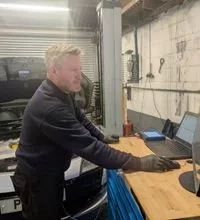ADAS: saving lives on two wheels
In this article: Advanced driver assistance systems are helping save lives in cars, and now they are doing the same for motorcycles
In the car world the availability of advanced driver assistance systems (ADAS) has played a big part in making motoring safer by reducing the number and severity of crashes and collisions, and is also having a huge impact on technicians. But where are these systems on motorbikes?
Research shows that while motorcyclists account for less than 1% of the traffic on UK roads, they consistently account for around 20% of the fatalities each year and that figure has been relatively steady since 2010. When you look globally, around 3,500 people die every day in traffic collisions and almost 25% of those involve a motorcycle.
So the big questions is can ADAS be employed on powered two wheelers and have an impact on these statistics? The answer is an unequivocal yes. It’s already happening and the pace is quickening as the technology improves and is made smaller to fit into the reduced space available.
Bosch has been leading the way for some time working alone and in conjunction with several manufacturers to produce systems that enhance the riding experience, but make it safer by taking control at critical times.
ABS brakes have been standard on large capacity and sports motorcycles and now of course are mandatory even on smaller machines. Traction control too has become standard fare, as has cruise control on touring machines.
Recently though we have seen bikes that utilise the Bosch-developed motorcycle stability control, (MSC), system. Available as a semi or fully integral system, it utilises advanced gyroscopes and accelerometers, looks at the vehicles speed, angles of lean and the braking force being applied, and can instantly adjust electronic braking and throttle settings to help prevent a crash.
Moving on they also have adaptive cruise control systems, a forward collision warning system and even a blind spot warning system all working in the same way as they do on cars. And even if the worst scenario should happen, there is eCall to summon assistance from the emergency services which gives the GPS location of the incident.
To allow these systems to be tested, a new self-driving motorcycle co-developed by AB Dynamics and based on a BMW C1 is being used to allow the new technology to be tested in realistic situations.
According to Dr Richard Simpson, the senior systems engineer at AB Dynamics: “It permits greater accuracy, repeatability, and consistency between tests than any human rider could achieve.”
Many of the motorcycle manufacturers are also working on their own systems. BMW has shown a concept machine with a flexing frame for better handling, head-up displays for the rider and other integrated technology. Yamaha has a similar system to the Bosch MSC on its R1M bike.
While ADAS for two and four wheels continues to develop, everyone must ensure that there is a commonality in that all systems talk to one another and four wheels recognises two. Otherwise there will be a repeat of the serious collisions in Norway when a Tesla car failed to detect a motorcycle when relying on ADAS and instead or reducing the crash numbers, it added one.




